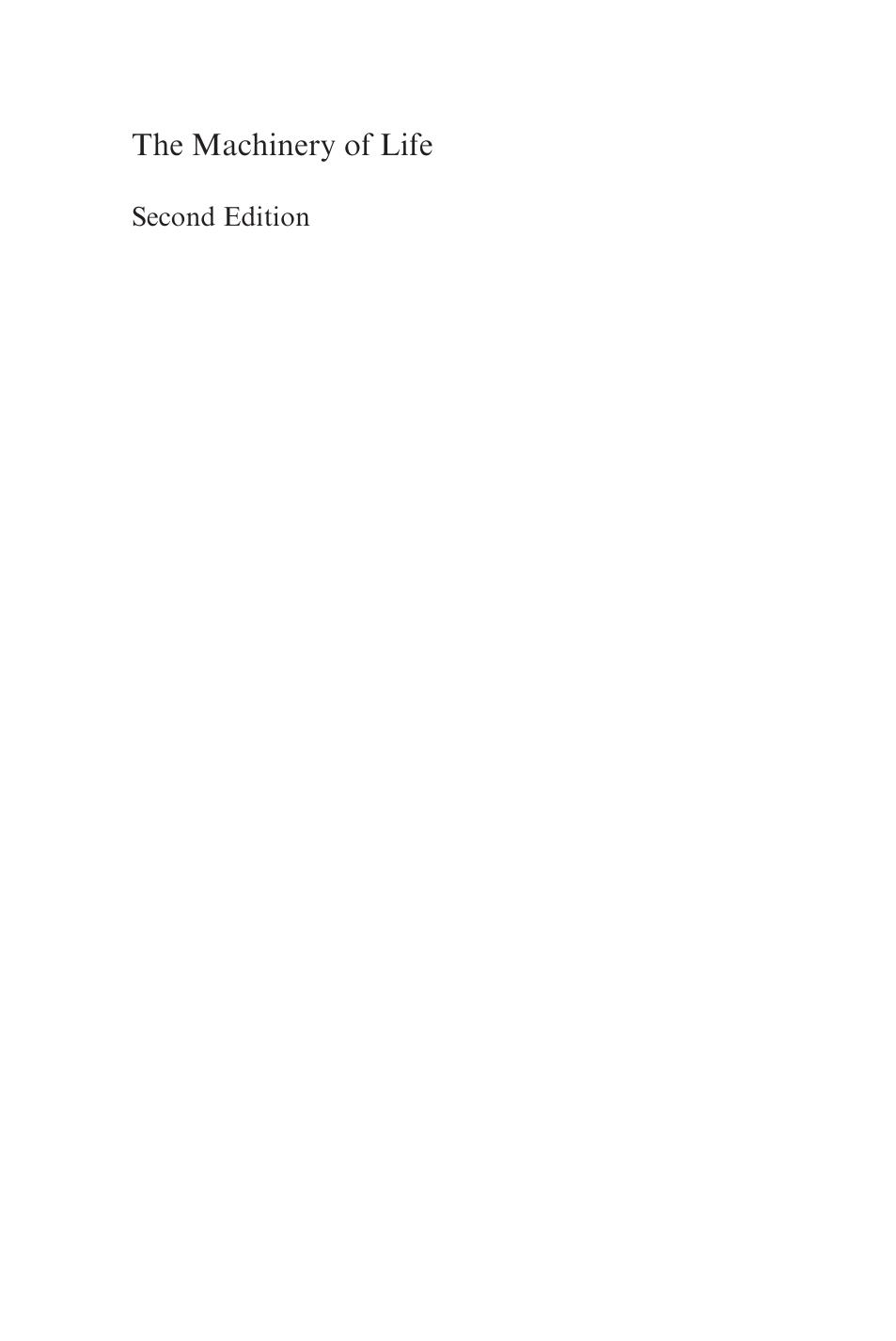The Machinery of Life by David S. Goodsell

Author:David S. Goodsell [Goodsell, David S.]
Language: eng
Format: epub, pdf
Publisher: Springer New York
Published: 2009-04-10T07:00:00+00:00
These types of cell-to-cell connections are fine for small regions of tissue, but to build large structures like muscles and organs, stronger materials are needed. These structures are built outside cells, surrounding and supporting them. They have many physical forms, ranging from elastic fibers to materials tough as concrete that last for centuries. Some tissues, like cartilage and bone, are mainly composed of this structural material, with only a scattering of cells acting as caretakers. Other tissues, like the densely packed neurons in the brain, have just enough to hold the cells together.
The building blocks of this extracellular matrix are built inside cells, then exported out of the cell and assembled in place. The major component of the extracellular matrix is collagen—it is so common that roughly one-fourth of the protein in your body is collagen. Collagens come in many forms, but all are built around a core of three protein strands wound tightly together like the strands in a rope. Several types of collagen are built for different purposes. One is a long, almost featureless strand that associates side-by-side to form huge collagen fibrils that provide most of the strength of the extracellular materials. Other collagens have specialized structures attached at each end of the stand, allowing them to form extended net-like structures. The networks are then woven together with other proteins and polysaccharides to create a tough basal lamina that surrounds and shapes cells (Fig. 6.3). Another collagen sews collagen fibrils and the basal lamina together.
Fig. 6.3 Extracellular Matrix The extracellular matrix is composed of a tangled network of structural proteins and polysaccharides. In this illustration, a cell is shown at far left in cross-section, a dense basal lamina is to the right of the cell membrane, and a collagen fibril takes up most of the opposite page. The basal lamina is composed of molecules such as collagen (A) and cross-shaped laminin (B). Integrin proteins (C) in the cell membrane link the basal lamina to the cytoskeleton inside the cell. Large proteoglycans (D) are woven into the basal lamina and mixed with long polysaccharide chains in the space outside. Several different types of collagen are shown in this illustration, including the collagen network in the basal lamina, another form that makes large anchoring fibrils (E), and several types that assemble together to form the huge structural fibril (1,000,000 X)
Download
This site does not store any files on its server. We only index and link to content provided by other sites. Please contact the content providers to delete copyright contents if any and email us, we'll remove relevant links or contents immediately.
| Cell Biology | Developmental Biology |
| Entomology | Marine Biology |
| Microbiology | Molecular Biology |
| Biostatistics |
Sapiens: A Brief History of Humankind by Yuval Noah Harari(14250)
The Tidewater Tales by John Barth(12608)
Mastermind: How to Think Like Sherlock Holmes by Maria Konnikova(7227)
Do No Harm Stories of Life, Death and Brain Surgery by Henry Marsh(6890)
The Thirst by Nesbo Jo(6826)
Why We Sleep: Unlocking the Power of Sleep and Dreams by Matthew Walker(6618)
Life 3.0: Being Human in the Age of Artificial Intelligence by Tegmark Max(5474)
Sapiens by Yuval Noah Harari(5294)
The Longevity Diet by Valter Longo(5019)
The Body: A Guide for Occupants by Bill Bryson(4974)
The Rules Do Not Apply by Ariel Levy(4859)
The Immortal Life of Henrietta Lacks by Rebecca Skloot(4525)
Animal Frequency by Melissa Alvarez(4395)
Why We Sleep by Matthew Walker(4359)
The Hacking of the American Mind by Robert H. Lustig(4318)
Yoga Anatomy by Kaminoff Leslie(4305)
All Creatures Great and Small by James Herriot(4232)
Double Down (Diary of a Wimpy Kid Book 11) by Jeff Kinney(4207)
Barron's AP Biology by Goldberg M.S. Deborah T(4096)
